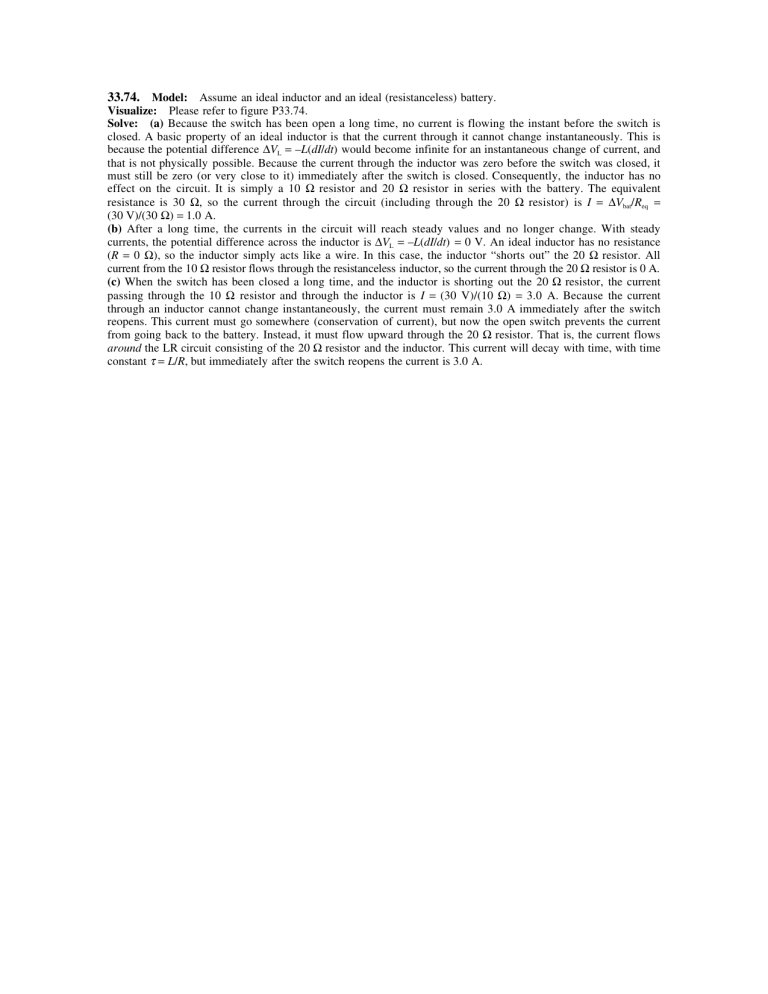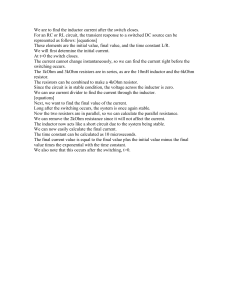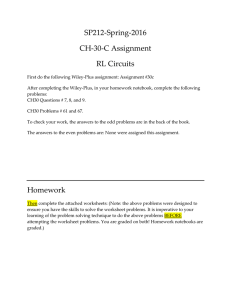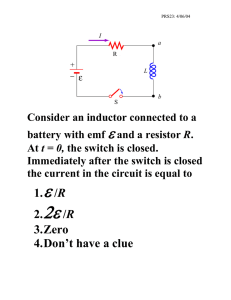33.74. Model: Assume an ideal inductor and an ideal (resistanceless

33.74.
Model: Assume an ideal inductor and an ideal (resistanceless) battery.
Visualize: Please refer to figure P33.74.
Solve: (a) Because the switch has been open a long time, no current is flowing the instant before the switch is closed. A basic property of an ideal inductor is that the current through it cannot change instantaneously. This is because the potential difference
∆
V
L
=
– L ( dI / dt ) would become infinite for an instantaneous change of current, and that is not physically possible. Because the current through the inductor was zero before the switch was closed, it must still be zero (or very close to it) immediately after the switch is closed. Consequently, the inductor has no effect on the circuit. It is simply a 10
Ω
resistor and 20
Ω
resistor in series with the battery. The equivalent resistance is 30
Ω
, so the current through the circuit (including through the 20
(30 V)/(30
Ω
)
=
1.0 A.
Ω
resistor) is I
= ∆
V bat
/ R eq
=
(b) After a long time, the currents in the circuit will reach steady values and no longer change. With steady currents, the potential difference across the inductor is ∆ V
L
= – L ( dI / dt ) = 0 V. An ideal inductor has no resistance
( R = 0 Ω ), so the inductor simply acts like a wire. In this case, the inductor “shorts out” the 20 Ω resistor. All current from the 10 Ω resistor flows through the resistanceless inductor, so the current through the 20 Ω resistor is 0 A.
(c) When the switch has been closed a long time, and the inductor is shorting out the 20 Ω resistor, the current passing through the 10 Ω resistor and through the inductor is I = (30 V)/(10 Ω ) = 3.0 A. Because the current through an inductor cannot change instantaneously, the current must remain 3.0 A immediately after the switch reopens. This current must go somewhere (conservation of current), but now the open switch prevents the current from going back to the battery. Instead, it must flow upward through the 20 Ω resistor. That is, the current flows around the LR circuit consisting of the 20 Ω resistor and the inductor. This current will decay with time, with time constant
τ = L / R , but immediately after the switch reopens the current is 3.0 A.




